
The South Korean system is based on a basic principle: you pay every time leftover food is thrown away.
“I’m used to it. For me, it’s a habit.”
Yuna Ku is a journalist for the BBC’s Korean service and lives in Seoul, the capital of South Korea. The young woman pays to recycle her food waste, which she deposits in machines with sensors spread across different locations where she lives — a condominium with 2,000 apartments.
South Korea’s food waste recycling system may seem strange at first glance, but it has turned the country into an example for the rest of the world.
Jae-Cheol Jang is a professor at the Institute of Agriculture at Gyeongsang National University in the south of the country and co-leader of a recent study on the Korean food waste recycling system.
“Data from the 2022 National Waste Management System shows that South Korea processes around 4.56 million tonnes of food waste per year (from homes, restaurants and smaller businesses),” Jang told the BBC.
“Of this amount, 4.44 million tons are recycled. This represents around 97.5% of food waste.”
The number is impressive.
In the United States, for example, the American Environmental Agency estimates that, of the 66 million tons of food waste generated in 2019 by restaurants, homes and supermarkets, around 60% ended up in landfills.
The UN estimates that, in 2019, food waste in homes, businesses and restaurants reached 931 million tons worldwide.
But how does South Korea manage to recycle its food waste so efficiently? And what can it teach other countries?
In 1996, South Korea recycled less than 3% of its food waste | Getty Images
Awareness campaigns and protests
The South Korean system is the result of decades of work. In 1996, the country recycled just 2.6% of its food waste, but this began to change with the economic transformation that began in the 1980s.
“The 1980s were a fundamental period for South Korea’s economic development,” explains Professor Jang.
“With industrialization and urbanization, social problems also emerged, and one of them was waste management.”
South Korea has more than 50 million inhabitants and a high population density of more than 530 people per square kilometer.
In Peru, for example, the density does not reach 30 inhabitants per square kilometer.
With economic changes, the number of landfills also grew, some of them close to residential areas, which generated many protests.
 South Korea’s rapid industrialization in the 1980s generated social problems, such as the increase in landfills | Getty Images
South Korea’s rapid industrialization in the 1980s generated social problems, such as the increase in landfills | Getty Images
Food waste mixed with other types of garbage causes bad odors and produces polluting liquids, which contribute to climate change.
When they decompose, waste releases methane, a greenhouse gas much more potent than carbon dioxide.
Pressured by citizens, the government had to find a solution to the landfill problem.
“There was a strong sense of community to address the social problems of the time, and the government’s waste management policies, combined with national efforts, have brought us here,” says Jang.
In 1995, a system was approved that charged per volume of waste generated, without separating food waste from general waste.
In 2005, the disposal of food waste in landfills was prohibited by law. And in 2013, the current Weight Based Food Waste Fee system was implemented, or charging for the weight of leftover food, in the free translation into Portuguese.
The system continues to evolve as technology advances, but it is based on one basic principle: “you have to pay every time you throw away your food scraps.”
Bags, stickers and radio frequency: how the system works in practice
The charging system varies according to the region or district, and even between different condominiums.
But in general, there are three options:
1. Use authorized bags
For those who choose to use bags to dispose of food waste, it is mandatory to do so with authorized bags.
“This is the case with my parents, who live at home. They buy the bags and, when they are full, they leave them in the garden because of the smell. They are collected once a week by the municipal service”, says Yuna.
There are bags of different sizes. A three-liter bottle costs 300 South Korean won, around 20 cents (less than R$1.20 at the current price). A 20-liter bottle costs US$1.50 (R$8.80).
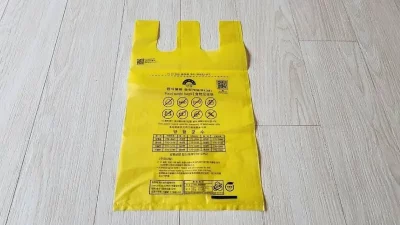 A three-liter bag costs 300 South Korean won, which is equivalent to approximately 20 cents | Yuna Ku
A three-liter bag costs 300 South Korean won, which is equivalent to approximately 20 cents | Yuna Ku
2. Use stickers
Businesses and restaurants generally use stickers that must be purchased in advance and stuck to each trash container, indicating the weight of the contents.
In South Korea, leftover food in these places can be quite significant due to a culinary tradition in the country called banchan, in which several dishes are served as accompaniment to the main dishes.
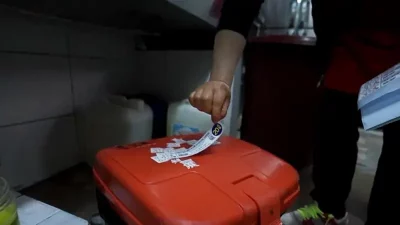 Some restaurants use stickers, which are attached to trash containers according to weight.
Some restaurants use stickers, which are attached to trash containers according to weight.
3. Use machines with RFID technology
Until June 2024, Yuna bought bags, but her condominium started using an automated system.
Today, she deposits food scraps into machines equipped with RFID (radio frequency identification), which transmits data via radio waves to a remote center.
“Every day I place food waste in a steel container. And, from time to time, I take this container to the machine, which is locked. To open it, I need to type in my address or hold up one of the cards I received when I moved here, which identifies each apartment”, he explains.
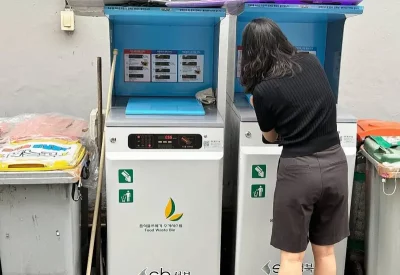 In Yuna’s condominium there are several machines with sensors that weigh the waste and calculate the amount to be paid | Yuna Ku
In Yuna’s condominium there are several machines with sensors that weigh the waste and calculate the amount to be paid | Yuna Ku
The machine automatically weighs the waste. In some cases, the amount is charged instantly to your credit card. In others, as in Yuna’s case, the machine records each use made and the final amount is charged in a monthly bill that includes other public services, such as water.
“What you pay per month depends on how much food you throw away.”
The young woman, who lives alone, pays less than US$5 per month (about R$30) for food waste.
“I find machines more intuitive than bags,” says Yuna.
“In my opinion, this system makes us more aware of our waste, because you see the weight of the leftover food in the machine every time you throw it away.”
In addition to the machines located in condominiums, some districts have trucks equipped with RFID, which weigh garbage containers at the time of collection, calculating the cost.
The fines
Yuna comments that, in general, the population correctly uses the recycling system, which in addition to regulating waste, has specific rules for the disposal of aluminum, plastic, paper and other materials.
If someone discards food waste in the wrong place, they could be fined. In the case of commercial establishments, the infraction can be detected both by the reduced amount of waste recorded and by security cameras.
“In my building there was a case of warning, and a warning appeared: ‘recently, someone disposed of food waste incorrectly. We have security cameras and we are watching everything. If you continue doing this, you will be fined’.”
In the case of residences, fines can exceed US$70 (R$400), depending on the frequency of the infraction.
As for companies, Jang says that fines can exceed 10 million South Korean won, which is equivalent to more than US$7,000 (R$41,000).
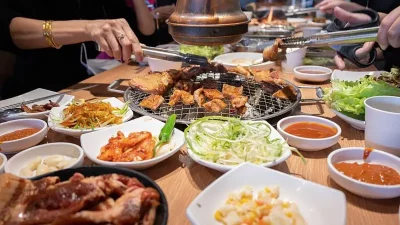 Waste in South Korea can be significant because of a culinary tradition called banchan, which serves several side dishes with a main dish | Getty Images
Waste in South Korea can be significant because of a culinary tradition called banchan, which serves several side dishes with a main dish | Getty Images
What is done with the waste
Food waste is recycled for different purposes. According to Jang, the main uses, according to 2022 data, are for animal feed (49%), fertilizer (25%) and biogas production (14%).
But South Korea’s recycling system still faces some challenges. One of them is the possible risk to animal health, as feed made from poorly processed food waste can transmit diseases.
“Currently, most industrialized countries prohibit or limit the use of food waste in animal feed,” says Rosa Rolle, a food waste specialist at the Food and Agriculture Organization of the United Nations, FAO.
In 2019, several Asian countries, including South Korea, faced an outbreak of African swine fever, a viral disease that causes hemorrhagic fever in pigs and leads to death.
The outbreak led the South Korean government to ban the use of feed made from food scraps in pig farms.
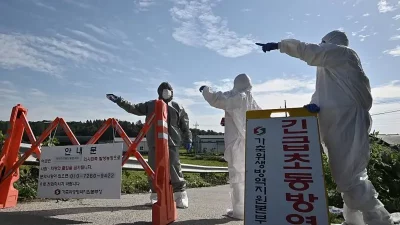 Outbreak of swine fever in 2019 caused the government to ban the use of feed made from food scraps | Getty Images
Outbreak of swine fever in 2019 caused the government to ban the use of feed made from food scraps | Getty Images
Rolle clarifies, however, that “there are studies that show that when the correct processing methods are used, feed made from animal waste is safe. The swine industry in South Korea has not been negatively affected by the use of these feeds.”
Jang says South Korea has a strictly regulated system for processing food waste used as feed, with methods such as heating and fermentation.
Other recycling challenges include the high amount of salt in typical Korean foods (excess salt can harm animals) and the need to improve technology to make biogas production more efficient.
What South Korea teaches us
One of the secrets to the success of the Korean system is the fact that it has several pillars, such as charging by weight of waste, fines, frequent educational campaigns that teach how to separate waste, and awareness of the environmental impact of improper disposal.
“It is an integrated approach, which combines financial incentives, public education and strict regulations”, explains Professor Jang.
“The system has proven effective in reducing food waste and can serve as a model for other countries seeking to improve their waste management systems.”
Another key factor is population engagement.
“In general, Koreans tend to follow the rules and have a strong sense of moral responsibility,” says Yuna.
“Of course, not everyone, but in general, it is like this. Furthermore, compared to the average salary in South Korea, the monthly cost of recycling food waste is not that high.”
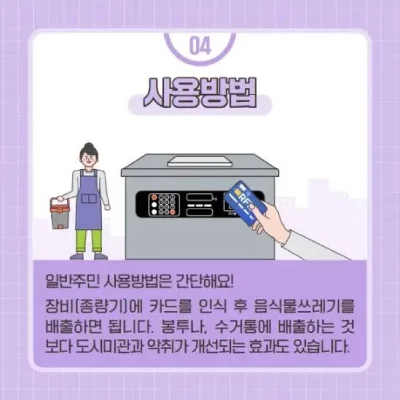 There are several educational campaigns in South Korea teaching people how to use machines and raising awareness about waste | Korea Environment Corporation
There are several educational campaigns in South Korea teaching people how to use machines and raising awareness about waste | Korea Environment Corporation
But would a “pay for waste” system work in countries with a much lower income?
For Rose Rolle, policies like the South Korean one are very effective in raising awareness, changing habits and encouraging recycling.
But she points out that, in countries with food insecurity, like many in Latin America, the focus should be on maximizing the use of food through reducing losses, donations and other measures.
Each country’s systems “must be based on solid data and have an understanding of where, why, and how much food waste and loss occurs. Solutions need to be based on scientific evidence and adapt to local realities.”
For the FAO expert, “there is no single formula that works for everyone.”
Originally published by BBC News
By Alejandra Martins – BBC News Mundo
Source: https://www.ocafezinho.com/2025/10/25/pague-por-seu-desperdicio-como-coreia-do-sul-recicla-97-dos-residuos-alimentares/

